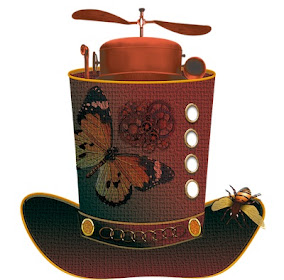Different pages display different content, but the design of your blog is constant throughout.
So it is that your readers, as they click through your blog, get many visual cues that they have not left your blog even as the content changes. Header, sidebar, gadgets, footer, color scheme, and typeface do not change.
This is valuable to you and your readers, and something that Blogger ensures without any work required on your part.
Sunday, January 23, 2011
Thursday, January 20, 2011
Gadgets in the footer
 |
| Library of Congress |
The horizontal region in your blog's footer, after the end of your posts, is sub-prime real estate.
Gadgets you place here do not compete for your readers' attention but will only be seen by those who make it to the bottom of the page.
If your left or right sidebar region is longer than the length of the posts shown, there will be a blank gap between the posts and the footer-area gadgets.
Gadgets anywhere add to load time and subtract from the available page-size quota.
My own rule of thumb is that any gadget so unimportant as to belong down here is not worth including at all.
Some exceptions could apply.
Your call.
| Index | Appendices » |
Tuesday, January 18, 2011
Gadgets on top

|
| Image: mariaisabela |
After your title, this is the first thing your readers will see.
Every time they visit.
Friday, January 14, 2011
Sidebar and other gadget areas
 |
| Photo: Irina Bevza (CC BY 2.0) |
Most blog themes include a column on the left or right hand side where you, the blog author, can put photos, text, links, and many automated blog gadgets. Some have sidebars on both sides.
For modern blog themes, the sidebar collapses into a small menu when viewed on phones and, sometimes, tablets.
Gadgets are sometimes called widgets. They can be dragged to horizontal positions at the top of the blog (just under, but not in, the title-and-tagline block), and the bottom of the blog (in the footer of every page).Your sidebar, and the gadgets you add, appear on every page of your blog.
Monday, January 10, 2011
Blog title and tagline

|
| Photo: Gotanero (CC BY-SA 3.0) |
Are you getting full value out of your title and tagline?
Thursday, January 6, 2011
Search-results pages
 |
| Photo: Marten Newhall |
Searching your blog for a word or a phrase in Blogger's navbar (or from
Blogger's sidebar search gadget) generates a dynamic page of those posts that
include the search phrase.
The results of this search take the
familiar form of all of Blogger's dynamic pages: posts, spilling automatically into
archived pages
if needed.
Unlike other dynamic pages, however, the default order is "by relevance," as determined by some undocumented algorithm. There is a link to sort the posts into the familiar reverse chronology.
Tuesday, January 4, 2011
Static pages
In the beginning was the blog, made of posts.
Archive and label-search pages helped readers to find the posts they liked.In late 2009, in response to popular demand, Blogger added static pages: Blog pages that do not comprise any posts at all.
Typical uses include an "about this blog" page, or an extended profile of the blog author, or an index of blog content.
Sunday, January 2, 2011
Label-search pages

|
| Photo: Mike |
Labels, and their related search pages, provide one of the most useful and powerful features of Blogger blogs: the ability to characterize posts, and to group like posts together on a separate page.
This is something you can't do using Blogger's static pages feature.
Subscribe to:
Posts (Atom)
